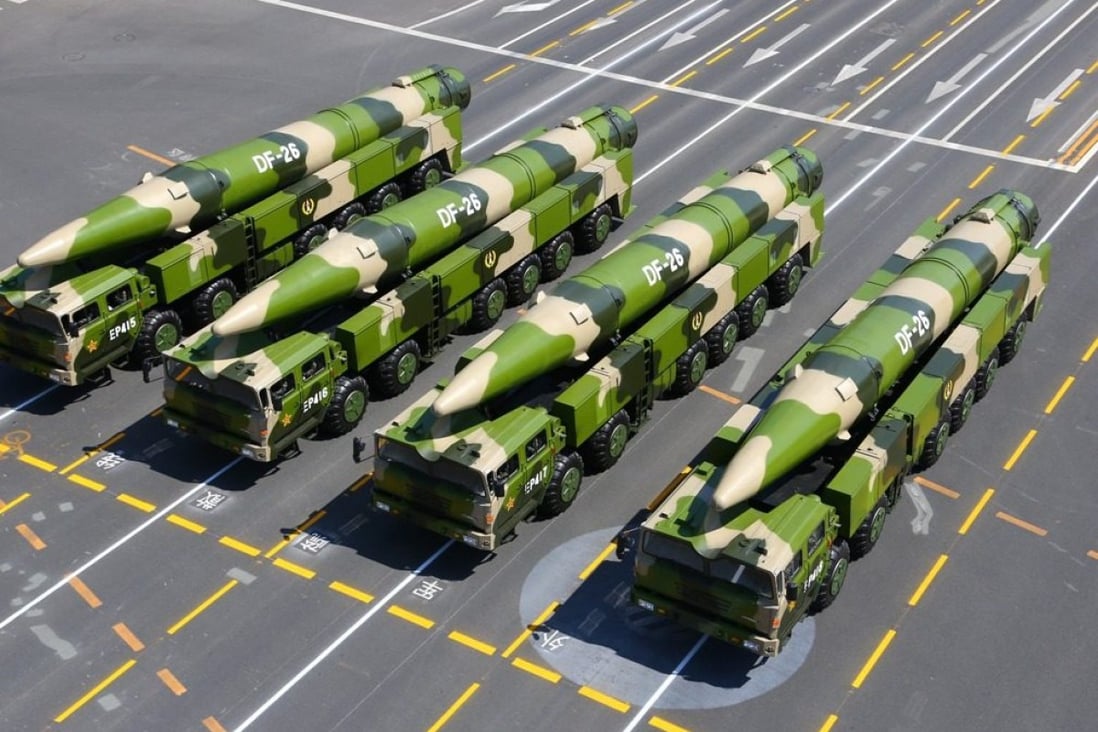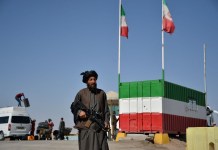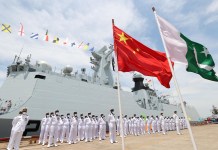As tensions continue to simmer in the volatile Indo-Pacific, a worrying new assessment has claimed that China can launch missile strikes across “two-thirds” of Australia.
Prime Minister Anthony Albanese announced the Defense Strategic Review in August, with the goal of “helping Defense better understand where it should prioritize investment” to “ensure the Australian Defense Force is well positioned to meet the nation’s security challenges through to 2033 and beyond.”
The recently released 33-page submission to the Defense Strategic Review, worked out by former defense analysts and the RAND Corporation, contains a map showing how much the country is vulnerable to future Chinese strikes, Australian media reported. The complete report will be published in the spring of 2023.
According to the submission, Australia is within striking distance of Chinese missiles. The artificial reefs and atolls in the South China Sea would allow China to launch “land-based DF-26 intermediate-range ballistic missile strikes.” China claims almost the entirety of the South China Sea and has carried out sustained militarization of the region.
It has been a point of discussion for a long time that China’s DF-26 intermediate-range ballistic missile, capable of reaching targets around 3,400 miles away, could pose a threat to key US military installations in the Pacific Rim. However, this is the first time Canberra has admitted the threat to its sovereign territory and military assets.

It is pertinent to note that the DF-26 long-range missile can also carry three nuclear warheads that can be separated and fired at different targets. In addition, it also has an anti-ship variant, the DF-21D medium-range ballistic missile, which has repeatedly made headlines for its reported potential to sink US aircraft carriers.
The latest submission also states that the Mischief Reef atoll, 3000 kilometers northwest of Darwin, was particularly concerning. This establishes a “ring range” across several Australian Defense Force sites in Queensland, the Northern Territory, and Western Australia.
As a preventive measure against Chinese hostility, the analysts and researchers have called on the Australian administration to move the stockpiles, fuel depots, and potential military bases further south in mainland Australia.
These submissions are significant as they come after a similar assertion regarding Chinese missiles endangering the United States. In November, the US revealed that China had installed long-range ballistic missiles aboard nuclear submarines capable of striking the US, as reported by EurAsian Times.
The Commander of the United States Pacific Fleet, Admiral Sam Paparo, stated that China’s six Jin-class submarines are now armed with JL-3 intercontinental ballistic missiles built to threaten the United States. The JL-3 missiles have a range of over 10,000 kilometers.
This was the first time the United States officially admitted that China had deployed the weapons on its nuclear-powered submarines, allowing it to attack the US mainland from its shores.
These open admissions by the western states indicate China’s rapidly expanding arsenal. Military experts believe that the tensions between the two sides could spill over into a fully-fledged conflict.
Expanding China Rattles Australia
The submissions come at a time when tensions between Australia and China have risen in the region despite some diplomacy between the two sides. Earlier this year, tensions peaked when China signed a security agreement with the Solomon Islands, a small island state just miles away from Australia.

The opacity surrounding the deal stoked fears that China could establish a military base 2,000 kilometers away from Canberra. The then Australian Prime Minister Scott Morrison warned that China’s naval base in the Solomon Islands would be a “red line” for his country and the United States. However, the two sides have come a long way despite the animosity.
Last month, Australian Prime Minister Albanese met with Chinese President Xi Jinping in a significant breakthrough after China imposed more than $20 billion of trade strikes on Australia during years of bitter rivalry.
However, it is not clear how far the impact of the meeting will go, given some fundamental issues between the two states. Canberra, for one, is a staunch ally of Washington.
Recently, Albanese played down a federal visit of MPs to Taiwan for fear of provoking China after achieving some semblance of normalcy in ties.

Even though the relationship between the two states appears to have somewhat stabilized in recent months, the underlying issues remain. The NSW Liberal Senator Jim Molan recently declared that Australia had entirely lost control of the South China Sea.
He said that under President Xi Jinping’s leadership, China had perfected the art of the so-called “gray zone,” which he defined as aggressive acts which do not evolve into an armed war. This becomes important when seen in the context of China intimidating Australian P-8A reconnaissance aircraft earlier this year.
The details of the Australian report come just days after the Pentagon warned that China’s nuclear arsenal will have 1500 warheads by 2035, with Washington naming Beijing as the most significant threat to the US in a new assessment. The Pentagon also estimates China’s operational nuclear weapon inventory has surpassed 400.
On its part, Australia’s ambition of acquiring a nuclear submarine under the AUKUS arrangement is proceeding at a snail’s pace. The Chinese security pact with the Solomon Islands and its appeasement of the Pacific Island States have changed Australia’s geopolitical and security calculations.
Despite using diplomacy to achieve stability in ties with Beijing, Canberra remains alive to the challenges posed by its expansion and aggressiveness in the Indo-Pacific region.
US To Boost Australian Defenses
Meanwhile, US Defense Secretary Lloyd Austin said that Washington would enhance the rotational presence of air, land, and sea forces in Australia, including bomber aircraft and fighters while sharing his apprehensions over Chinese belligerence.
Austin said the two countries also agreed to “invite Japan to integrate into our force posture initiatives in Australia.”
The US and Australia share a vision of a region where nations can decide their own futures, he told a joint news conference with his Australian counterpart that included the countries’ foreign ministers.
“Unfortunately, that vision is being challenged today. China’s dangerous and coercive actions throughout the Indo-Pacific, including around Taiwan, and toward the Pacific Island countries and in the East and South China Seas, threaten regional peace and stability,” Austin said.
- Contact the author at sakshi.tiwari9555 (at) gmail.com
- Follow EurAsian Times on Google News




